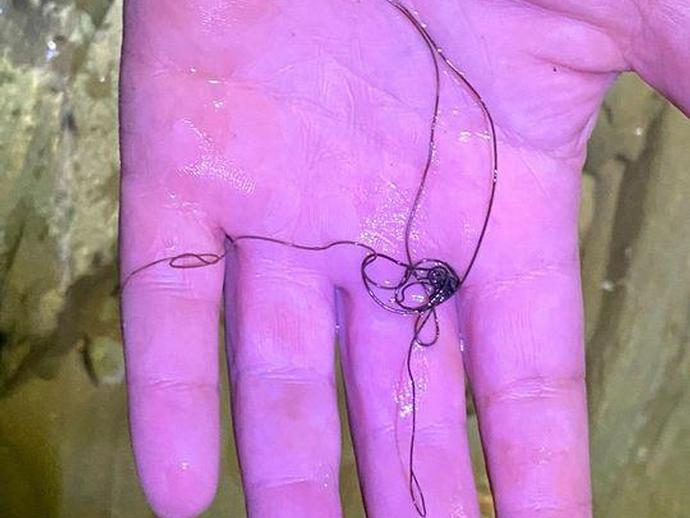August 10, 2021
It's time for the Tuesday edition of #BenInNature presented by our friends at Carter Bank & Trust!
This may look like a photo of something that was fished out of a shower drain, but it's actually a living creature! This is a horsehair worm (phylum Nematomorpha), and while its life cycle is a bit gross, it's also quite remarkable!
As adults, horsehair worms can be found in water, including not only streams and ponds but also puddles, watering troughs, and swimming pools. They lay their eggs in water, and when the eggs hatch, the larvae form a protective covering and wait around for an insect to eat them. There are hundreds if not thousands of different species of horsehair worms, many of which target specific insects; grasshoppers are a common host, so in this hypothetical, we'll imagine that a grasshopper comes along and eats a larval horsehair worm.
Once eaten, the larva's protective covering dissolves and it bores its way into the host grasshopper's body cavity, digesting and absorbing the surrounding tissue. Eventually, however, the horsehair worm will need to get back to water to complete its life cycle, and grasshoppers aren't known for being strong swimmers. So how does it do it?
That's the remarkable trick of the horsehair worm: it alters the behavior of its host insects to make them suicidal! When the time comes for the horsehair worm to head back to water, the horsehair worm manipulates the host insect into jumping straight into a body of water, where the worm bores its way out of the insect and swims away to freedom!
While this is all pretty traumatizing if you're an insect, us humans have nothing to fear from horsehair worms, fortunately. On one final note, these critters are also sometimes called "Gordian worms." This name comes from the legend of the Gordian Knot, an impossibly tangled knot that Alexander the Great was said to have solved by simply cutting it in half with his sword. As you can see in the photos, these worms have an unusual tendency to tie themselves into knots as adults. Maybe their lives are really stressful.
ABOUT #BenInNature
Social distancing can be difficult, but it presents a great opportunity to become reacquainted with nature. In this series of posts, Administrator of Science Ben Williams ventures outdoors to record a snapshot of the unique sights that can be found in the natural world. New updates are posted Monday - Friday, with previous posts highlighted on the weekends. This series of posts is made possible thanks to the support of VMNH Corporate Partner Carter Bank & Trust (www.cbtcares.com).
NATURE PHOTO IDENTIFICATIONS
If you discover something in nature that you would like help identifying, be sure to message us right here on Facebook with a picture (please include location and date of picture) and we'll have our experts help you identify it!

 Hours & Admissions
Hours & Admissions Directions
Directions

